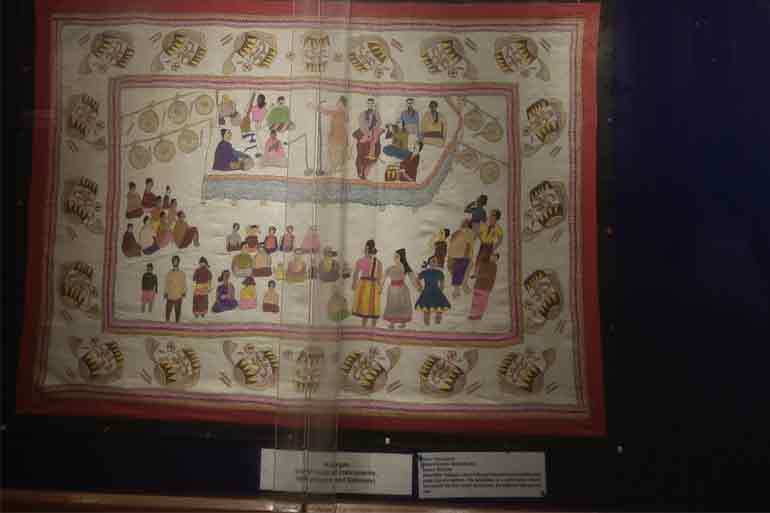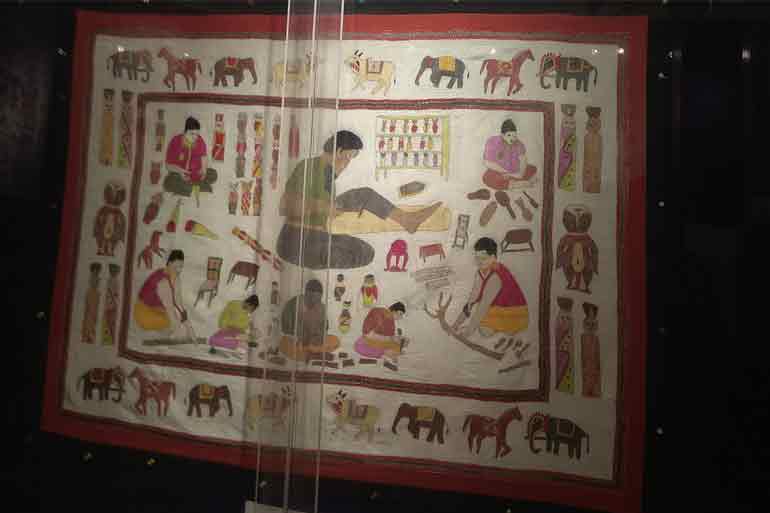Kolkata’s Kantha Museum, where tales are stitched
That soft and embroidered fabric with exquisite designs, that probably remind us of our granny’s love and our childhood winters. Yes, we are speaking of Bengal’s quintessential quilt version of Kantha and the exclusively embroidered ones known as Nakshi Kantha. If you wish to see a plethora of such Kantha Work under one roof, you must drop in at the Kantha Museum of Ambedkar Bhavan, Salt Lake.
The art of stitch-work has been practiced in Bengal for centuries. According to an information board on the museum wall, Krishnadas Kaviraj, a scholar from medieval period, had mentioned about Kantha in the book Sri Sri Chaitanya Charitramrita. Traditionally, materials that were used to make kanthas were old saris, lungis and dhotis. Ladies of the house in rural Bengal were expert in this art and still in some corners we find them making it before a newborn’s arrival.

While Nakshi Kantha is an exclusive art form, that reached a literary height in poet Jasimuddin’s Nakshi Kanthar Maath. The main characteristic of a Nakshi Kantha is prevalence of a focal point from where the stitching starts. Although there is no specific symmetry, the stitch-work spreads across the garment around this focal point. For example, many kanthas have lotus as a focal point. Around that point, floral motifs and undulating vines are stitched with impeccable accuracy. There are also other subjects covered through hand-made motifs, such as birds, animals, fish, or even personal care articles.
One of the primary objectives of the museum is to commemorate and acknowledge the contributions of the artists who developed, nurtured and promoted the Kantha art in Bengal. This is evident from various Nakshi Kantha displays on its walls, telling stories through invigorating patterns. Shampa Chanda Sinha of Kantha Museum said: “American art historian Stella Kramrisch regards Kantha very highly. According to Kramrisch, the kanthas of Bengal are saturated with numinous power, reflecting the shakti of the region, expressed delicately through innumerable disciplined stitches.
Also Read
BENGAL STILL BOASTS OF THE FINEST MUSLIN
The museum has an exquisite collection of Nakshi kanthas, some of which are more than 150- year-old. Each of the kanthas sport a distinct aesthetic tone and unique stitch-work vocabulary. These vividly express the cultural heritage of old rural Bengal. One of the kanthas, spread about 6 feet wide and displayed, behind a glass pane, shows the rural scene with its signature warmth, via embroidery. Ponds, little plants, village people, animals etc., dwell on Kantha work in simplistic yet engrossing designs.

The museum was built by state government’s Backward Classes Welfare Department to showcase the sheer beauty of this rapidly depleting art. The department focuses on preserving this heritage. Supporting the economically backward artisans of this craft and empowering the economically underprivileged artists is also one of its prime objectives. Hence you get to see the artworks of Swapna Khatun, Putul Das, Masuda Sultana, Sima Lohar, Najmin Khatun, Manju Das and others who are all from rural Bengal and find an expression through their artwork. So, if you are passionate about the dying art forms of Bengal, this is truly a place to dig through and learn more.









